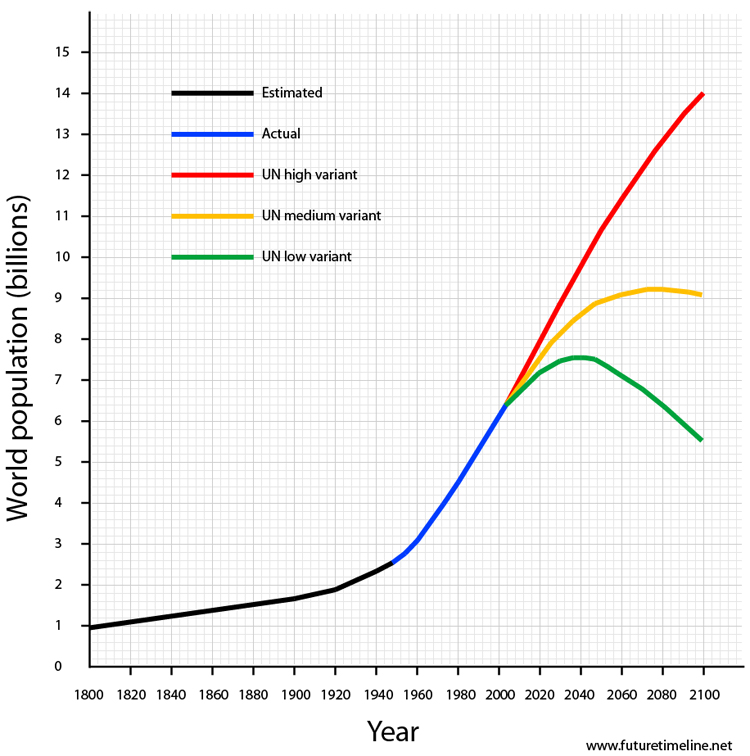You know that earth has so many people inside it. It's almost 7 billion people in this planet that will increase and increase every year. The world population can increase until 14 billion on 2100 if we use UN high variant or about 9 billion if we use UN medium variant.
14 billion humans use 148,940,000 sq km -total land surface area of earth- is still normal, but we should worry about the freshwater which is less than 4% of our total water. That -less than 4%- water will be used for 14 billion humans, you can predict that water will grow really expensive. Though there are some predictions of the decreasing population of the world we still have to alert that it will be a suicide if we don't plan to face this water problem. Just imagine if we don't have that fresh water, no drink, no shower, no lipstick, no shampoo, and even no life. So, someday we will need a new place when earth is not friendly anymore.
And one of the candidate is Titan. Why?
"Like Earth, Titan has tens-of-thousands-of-year variations in climate driven by orbital motions," Aharonson says. "On Titan, there are long-term climate cycles in the global movement of methane that make lakes and carve lake basins." "We may have found an example of present-day climate change, analogous to Milankovitch climate cycles on Earth, on another object in the solar system," he adds.
I have not done this map, but I think I have to write this so I won't lose it.
So let's begin the How part. It's very simple, enjoy this.
You will need :
1. Mapping software
2. Titan image
3. Titan DEM
4. Regionalization guide
5. Ice area data - recommended
6. Land use area data - recommended
7. Underground data - recommended
How is it? Here we go :
1. Use Titan image and Titan DEM to find Titan's elevation. Make an elevation reference of a certain area. Then use sample point as much as you can on Titan's surface.
2. If you find Titan's elevation you can determine where we can develop a civilization. You have to know that on the earth we often use flat surface to develop a civilization. So we will build a civilization on a flat surface near an outlet -river-.
3. With the Titan's elevation we will know the shape of Titan's surface then we can determine where is the nearest place to river -or potential river- because early civilization needs high amount of water and of course it's so important since human is made from 75% water. So we will build a civilization near a river or near a lake.
4. Regionalization. You need a regionalization guide to make specific regions in your civilization map so you can plan your civilization better. Regionalization will help you to answer this kind of question: "what is the purpose of that area?". If you find the answer you will know what is the potential of your civilization area and the potential of those regions in your area.
5. Use mapping software to make it real. And your map is ready to use.
6. But wait, if you have ice area data, land use area data, and underground data it will be better. Ice area data will guide you to find where is the ice that -you know- has much water. Land use area data will give you so many considerations to determine your civilization -that will help to increase the accuracy of your map-. Underground data will help you to find out where is the safest place and where is the area with much groundwater. If you have them you can overlay those data with your civilization map, so it will be a new civilization map with so many considerations.
It's simple, but the problem is: how we can get those data? We have to wait NASA or its companion and of course its rival to find those data.
Reference :
http://solarsystem.nasa.gov/scitech/display.cfm?ST_ID=2199
http://www.sciencedaily.com/releases/2012/09/120928085222.htm
http://www.futuretimeline.net/subject/society-demographics.htm
http://ga.water.usgs.gov/edu/earthhowmuch.html
http://chartsbin.com/view/wwu
http://www.greenprophet.com/2010/04/civilization-water/
http://www.nasa.gov/mission_pages/cassini/multimedia/titan20120223L.html
all retrieve on 2 January 2014
The blue sky comes with beautiful grace, let me be that blue sky for you...












0 komentar:
Posting Komentar